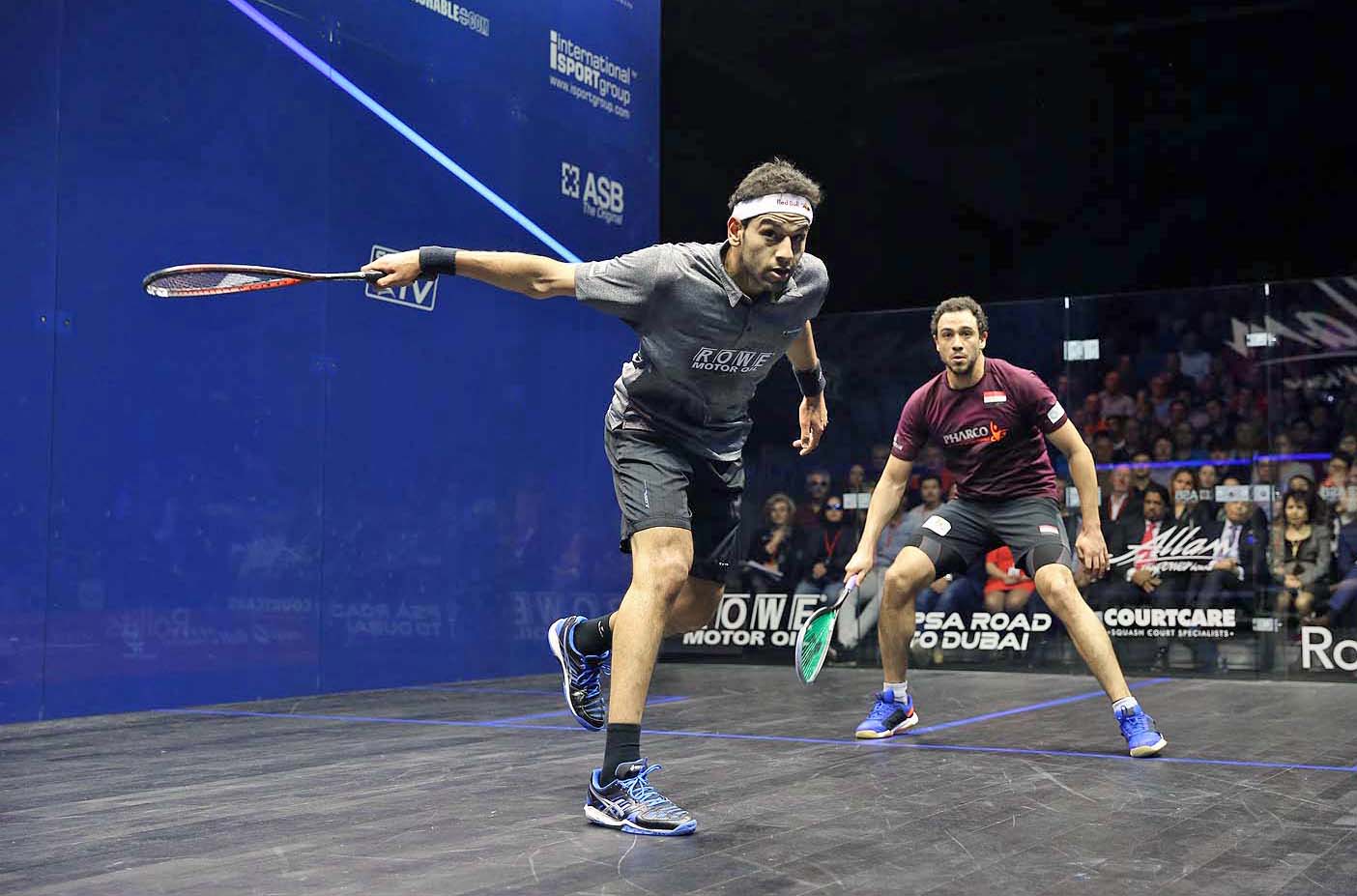
Mohamed Elshorbagy decides to counter.
by Richard Millman
Squash enjoys the patronage of people of all ages, skill levels, genders, nationalities and, to some degree, a broad range of the physical and mental spectrum of human beings.
No matter what group you belong to, the learning curve in squash necessarily takes us through steep ups and downs as we progress along our personal journeys in the game. Novices, especially younger folks, are attempting to establish themselves in the pecking order of not only the game, but also of life.
As such, people that are newer to the game but less aware of the massive range of variables, tend to be very eager to achieve the ‘quick fix’ of immediate conquest. All of us go through the initial phase of gradually learning the principles of the game: the over-arching theory of survival, the physical requirements of constantly moving to defend our territory against possible attack, and the technical skills required in order to be able to put the ball in appropriate places.
Having gone through the learning of the fundamentals, we are then let loose on the competitive world and, as confidence in our skill grows, inevitably we enter into the delusory state of believing that we, above all other squash players, have the capacity of hitting shots that our opponents cannot retrieve.
That El Dorado of our game – the ‘winner’ or ‘kill-shot.’
Unfortunately, there is no such thing as a ‘winner’ by design. Why? Because if a squash player believes that they are about to end the rally, the mechanics of their movement and their swing immediately freeze up and fail. If you don’t believe your opponent will retrieve your shot, you don’t believe that movement is necessary as, in your mind, the rally will end.
As soon as you stop your movement, your legs stop, and your weight is not able to gain momentum or acceleration, the force wave no longer travels through your body into your arm to be delicately disbursed by your hand and fingers through your racquet; tension in your arm muscles increases because you try and generate force with the comparatively frail muscles of the arm which, being overloaded, break down – and you are likely to make an error.
The difference between “Building” and “Forcing.”
When a player ‘builds’ a rally, the ‘builder’ considers the consequences of each strategic decision in light of where that decision will leave them. Ramy Ashour is a wonderful ‘builder.’ Spectators are often amazed at the spectacular shots he produces – they are indeed dramatic. But what makes them effective is not that he hits the nick with awesome regularity, but rather that when Mohammed Elshorbagy strains himself to return Ramy’s attacking shot, Ramy is already waiting to jump onto Mohammed’s next shot. This is because Ramy began to move into position to defend the court against all of Mohammed possible options when retrieving Ramy’s shot, fractionally BEFORE he struck the ball. In this way he generates force by accelerating his body weight at the same time as moving into the best possible strategic position, so that he is able to load his physical potential and force for retrieving the next ball BEFORE Mohammed hits it.
‘Forcing’ players on the other hand, make decisions on the basis of trying to ‘force’ the culmination of the rally as immediately as possible. This is a philosophically flawed strategy as it requires a strong belief that you have the capacity to produce shots that the opponent is unable to return. It is a short term strategy that pressurizes the ‘forcer’ more than the opponent, as the ‘forcer’ feels the necessity to produce an extraordinary level of attack to immediately overcome the opponent, with little regard for what to do in the event that the ‘forcing’ behavior doesn’t bring the rally to a favorable close.
This is often seen in junior players who have become accustomed to beating players weaker than themselves and who find it difficult to accept that, no matter how much effort they put into their shots, they cannot summarily overcome better opponents. It is even seen at the professional level when fatigue or frustration set in and a player convinces themselves that they simply cannot ‘build’ a strong position against their opponent
Sadly some players are so talented that they get some reward for this behavior, which ultimately leads to disaster, because a talented ‘builder’ will always beat a talented ‘forcer’ simply because the ‘builder’ is always allowing for the opponent to retrieve the ball.
So my advice is this: Attack to your heart’s content, but understand that you can only attack in proportion to your capacity to defend your opponent’s potential counter attacks. If you want to play three shot rallies you can do that, if you always expect the fourth shot and are in position to cover it when it comes.
If the counter attack doesn’t come…celebrate! But celebrate in the certain and empowering knowledge that you would have been ready if it had come!





